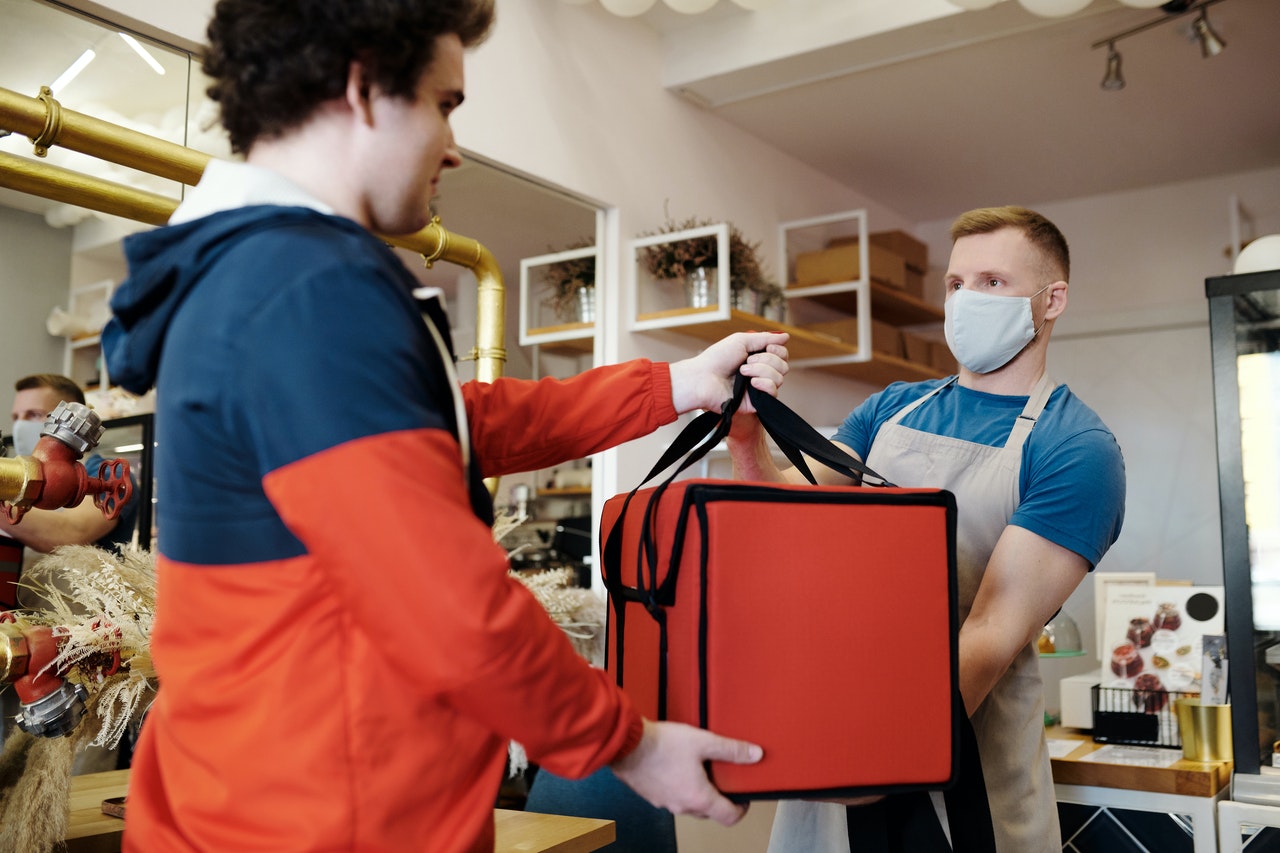Shuttered shops and restaurants on deserted high streets; that’s one image from life under lockdown that will stay with us for a long time. But in every crisis lies an opportunity. One of the most significant lifestyle changes brought about by the Covid-19 restrictions was in where and how we eat; with restaurants and cafes closed, and many people working from home, we suddenly switched to having meals and groceries delivered to our doorstep.
There was evidence of this growing trend towards home food delivery even before the pandemic hit. Companies, such as Deliveroo and UberEats, had been delivering our favourite burgers, curry or chicken meals on demand for some time. Even, Michelin fine dining could be enjoyed from the comfort of home.
Similarly, online ordering and home delivery of the weekly supermarket haul was also proving popular. In the last decade, millions of consumers had already demonstrated their preference for grocery delivery, rather than spending their precious evenings and weekends shopping for food. No one, it seems, enjoyed the hassle of driving, parking and manoeuvring small children around supermarkets.
Home delivery was a lockdown lifeline
Then, as millions of people were asked to stay home to contain the spread of coronavirus, food delivery vehicles started to appear everywhere. Lockdown was a tough challenge for both consumers and the food industry. Home delivery was the lifeline we all needed.
As bars and restaurants closed, owners proved their resilience by shifting their entire business model to home deliveries practically overnight. As consumers turned to online grocery providers as a safer alternative to shopping in stores, supermarkets and other food retailers pivoted or ramped up their delivery capabilities to meet the huge surge in demand.
According to figures from Kantar Retail, in the pre-Covid era around 7% of all groceries bought in the UK were ordered online. That figure is forecast to rocket by 25.5% this year in response to Covid-19. All this has forced many restaurants and grocers, even those which have never had online delivery services, to reach out to third party delivery companies to try to meet demand.
For example, before the pandemic, Aldi and Marks & Spencer had only limited food and drink home delivery options in the UK. As a response to the crisis, they enlisted Deliveroo’s help to meet increased demand – and they weren’t the only ones. Majestic Wine and McColl’s, the convenience store, have also partnered with Deliveroo to offer home delivery of a range of daily essentials.
UberEats is also adding grocery delivery to their services. And, not just in the UK; they have already established a partnership with French supermarket Carrefour and are working on similar ideas in Brazil and Spain. What’s more, online shopping and home delivery is no longer the preserve of the young; it increased by 94% year-on-year among over 65s.
These new habits are here to stay
Covid-19 has been a tipping point. Lockdowns forced people to get past the initial friction of setting up their online shopping account. When people get into the habit of ordering their groceries online, it’s likely to stick.
Similarly, many people have enjoyed having treats delivered to their home, often for the first time. According to Just Eat, Brits ordered 36% more home delivery desserts during lockdown. Those cravings are likely to remain popular even as quarantines and restrictions are lifted.
That’s partly because some consumers remain cautious about dining in restaurants and using public transport. But, as more home working looks to be a long term trend, many people have simply got used to swift, convenient and efficient online ordering and home delivery. In fact, in a recent UK study 60% of those who had ordered restaurant home delivery for the first time (or more often than usual) during lockdown said they would continue with this frequency of ordering.
Such off-premises dining now covers everything from sushi and ice-cream to family meal kits. This is not only convenient for consumers; it is also a vital source of revenue for capacity-limited restaurants as well as supermarkets, convenience stores and other food retailers. It’s also a huge opportunity (and challenge) for the food businesses who supply restaurants and shops who must now ensure their products are listed, promoted and branded appropriately on delivery platforms.
Giving consumers what they want and opening up a new sales channel
Home delivery is here to stay. Now, it makes perfect sense to many people; the virus is still around and they want to stay indoors and have their meals and groceries delivered. Longer term, as today’s consumers value convenience and time saving, why stop once the pandemic is under control?
By offering home delivery, restaurants and food retailers are giving consumers what they want. At the same time, they are opening up an additional sales channel for themselves and the food enterprises that supply them. Look out for our next blog where we’ll explore the challenges and opportunities for the food industry.
In the meantime, if you’d like to find out more about how Happ Consulting is responding to these changes in consumer behaviour, check out our new Delivery Partner Management Platform.

